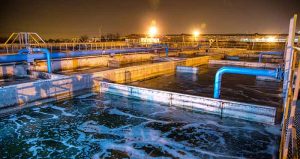Electromagnetic flowmeters have become one of the most reliable and widely used instruments for measuring liquid flow in industries ranging from water treatment to chemical processing. While these devices offer exceptional accuracy and long-term performance, one challenge that can compromise their reliability is the presence of empty pipe conditions. This is where the empty pipe alarm plays a critical role.
In this article, we’ll explore in depth why your electromagnetic flowmeter needs an empty pipe alarm, how it works, the problems it prevents, and the benefits it brings to different industries. By the end, you’ll understand why this seemingly small feature is essential for maintaining measurement accuracy, protecting your equipment, and saving costs in the long run.
1. Introduction to Electromagnetic Flowmeters
An electromagnetic flowmeter (EMF) is a type of flow measurement device that operates on Faraday’s Law of Electromagnetic Induction. When a conductive fluid passes through a magnetic field, it induces a voltage that is directly proportional to the velocity of the fluid. This voltage is measured by electrodes inside the meter and converted into flow rate.
Unlike mechanical flowmeters, electromagnetic flowmeters have no moving parts, which makes them highly reliable, low maintenance, and suitable for measuring liquids with suspended solids, chemicals, or wastewater.
However, for an EMF to work correctly, the measuring tube must always be full of liquid. When the pipe becomes empty or partially filled, the flowmeter cannot generate accurate readings — and that’s where the empty pipe alarm becomes essential.
2. What Is an Empty Pipe Alarm?
An empty pipe alarm is a built-in detection function in electromagnetic flowmeters that alerts operators when the measuring tube is not completely filled with liquid. It essentially acts as a safeguard, ensuring that measurement errors caused by the absence of fluid are identified immediately.
The alarm is typically triggered by electrodes located at the top of the measuring tube. If these electrodes do not sense conductivity (indicating no liquid contact), the system recognizes this as an empty pipe condition and issues an alert.
3. Why Empty Pipe Conditions Are a Problem
Empty pipe conditions may sound harmless at first, but they can cause serious measurement and operational issues, including:
-
False flow readings – When the pipe is not filled, the flowmeter may register zero flow or random fluctuations that misrepresent actual conditions.
-
Process inefficiencies – Incorrect data can affect dosing, mixing, or treatment operations in industries like wastewater treatment or chemical production.
-
Equipment damage – Pumps, valves, and downstream processes may be negatively impacted if they continue operating based on false flow data.
-
Compliance risks – In regulated industries such as pharmaceuticals or drinking water, inaccurate flow measurement can lead to non-compliance with safety and quality standards.
In short, without an empty pipe alarm, you’re risking not only your data integrity but also the reliability of your entire process.
4. How an Empty Pipe Alarm Works in Electromagnetic Flowmeters
The principle behind an empty pipe alarm is relatively simple but highly effective. Here’s how it functions:
-
Electrode Monitoring – Most EMFs have electrodes at different positions inside the tube. The empty pipe detection electrode is typically located at the top.
-
Conductivity Check – Since EMFs require conductive fluids, the electrode detects whether liquid is in contact.
-
Signal Processing – If no liquid is present, the system interprets the absence of conductivity as an empty pipe condition.
-
Alarm Trigger – The device then triggers a visual, audible, or system-level alarm (depending on setup) to alert operators.
-
Preventive Action – Operators can stop processes, shut off pumps, or troubleshoot before false readings cause problems.
5. Key Benefits of an Empty Pipe Alarm
Adding an empty pipe alarm to your electromagnetic flowmeter provides multiple benefits, such as:
-
Improved measurement accuracy by ensuring readings are only taken when the pipe is full.
-
Enhanced process safety, preventing pump cavitation or system failures caused by dry runs.
-
Reduced maintenance costs since equipment damage due to false data is minimized.
-
Regulatory compliance, especially in industries where accurate metering is legally required.
-
Operational efficiency, as operators can respond quickly to abnormal conditions.
6. Real-World Applications Where Empty Pipe Alarms Matter
a) Water and Wastewater Treatment
In water treatment plants, empty pipe conditions can occur during startup, shutdown, or maintenance. An empty pipe alarm ensures dosing and treatment processes remain accurate.
b) Chemical Processing
Highly reactive or corrosive chemicals require precise flow control. A false reading caused by an empty pipe could disrupt product quality or cause safety risks.
c) Food and Beverage Industry
Consistency in recipes and safety standards depends on precise flow measurement. An empty pipe alarm prevents batch errors when pipelines are flushed or cleaned.
d) Pharmaceutical Manufacturing
In a highly regulated environment, even small measurement inaccuracies can result in failed compliance tests. Empty pipe alarms ensure strict accuracy.
e) Power Generation
Cooling water circuits in power plants rely on accurate flow data. Empty pipe alarms prevent overheating and equipment damage.
7. Common Causes of Empty Pipe Conditions
To understand the importance of detection, it’s useful to know what causes empty pipe situations in the first place:
-
Improper installation – Incorrect pipe orientation or placement may cause air pockets.
-
Pipeline draining – During maintenance or shutdown, pipes may drain unexpectedly.
-
Pump failures – If a pump stops working, the pipe may no longer stay full.
-
Valve malfunctions – Improperly closed or opened valves can lead to partial filling.
-
Air entrainment – Bubbles in the system can mimic empty pipe conditions.
8. Best Practices for Using Empty Pipe Alarms
To get the most out of your electromagnetic flowmeter’s empty pipe alarm, follow these best practices:
-
Correct installation – Ensure the flowmeter is installed in a location where the pipe stays full under normal operation.
-
Regular testing – Periodically check the empty pipe detection function to confirm it works as intended.
-
Set appropriate alarms – Configure alarms to trigger clear, actionable notifications.
-
Train operators – Make sure staff understand what empty pipe alarms mean and how to respond.
-
Combine with other safeguards – Use pressure and level sensors alongside empty pipe detection for comprehensive protection.
This article enables you to understand 5 Proven Ways to Prevent Empty Pipe Alarms in Electromagnetic Flowmeters
9. Advancements in Empty Pipe Detection Technology
Modern electromagnetic flowmeters are evolving with more advanced self-diagnostics and intelligent alarms. Some new features include:
-
Smart alarms that distinguish between actual empty pipe conditions and bubbles/foam.
-
Remote monitoring that sends alerts directly to control rooms or mobile devices.
-
Integrated system protection, shutting down pumps automatically when an empty pipe is detected.
-
Data logging to analyze the frequency of empty pipe conditions for process improvement.
These advancements mean operators can act faster, reduce downtime, and improve process reliability.
10. Choosing the Right Electromagnetic Flowmeter with Empty Pipe Alarm
Not all electromagnetic flowmeters are built the same. When selecting a device, consider:
-
Pipe size compatibility – Ensure the flowmeter fits your process pipeline dimensions.
-
Fluid conductivity requirements – Different flowmeters have minimum conductivity thresholds.
-
Alarm configuration options – Look for adjustable sensitivity and customizable alerts.
-
Integration with control systems – Choose models that communicate easily with your SCADA or PLC systems.
-
Brand reliability and support – Opt for manufacturers with strong service networks and proven reliability.
11. Cost vs. Value of Empty Pipe Alarms
Some operators may hesitate to invest in an electromagnetic flowmeter with an empty pipe alarm due to slightly higher costs. However, when you consider the potential losses from downtime, compliance issues, or equipment damage, the return on investment is clear. The cost of a single incident caused by undetected empty pipe conditions can far exceed the additional price of this feature.
12. Conclusion
An empty pipe alarm is not just an optional feature — it is a critical safeguard that ensures the accuracy, safety, and efficiency of your electromagnetic flowmeter. By preventing false readings, protecting equipment, and enabling fast operator response, this small feature delivers significant value across industries.
Whether you’re running a water treatment facility, a chemical plant, or a food processing line, investing in a flowmeter with a reliable empty pipe alarm will save you time, money, and stress in the long term.
In today’s competitive and compliance-driven environment, ignoring this functionality is simply not an option. If accuracy and reliability matter to your operations, then your electromagnetic flowmeter absolutely needs an empty pipe alarm.
We are a manufacturer of automatic flow meters with many years of experience in the industry. We have strong independent research and development capabilities and are a leader in the flow meter industry. Our main products include electromagnetic flow meters, vortex flow meters, turbine flow meters, ultrasonic flow meters, Coriolis flow meters, various solenoid valves, level meters, control units and valves, etc. Welcome to purchase –KFBEST






